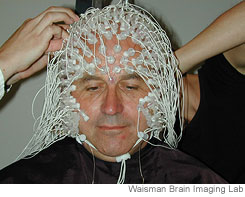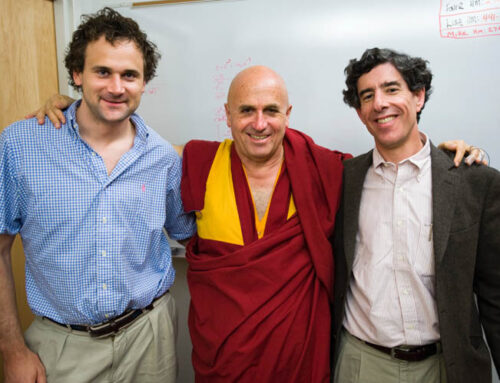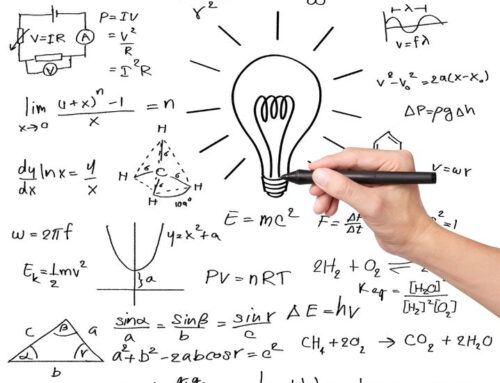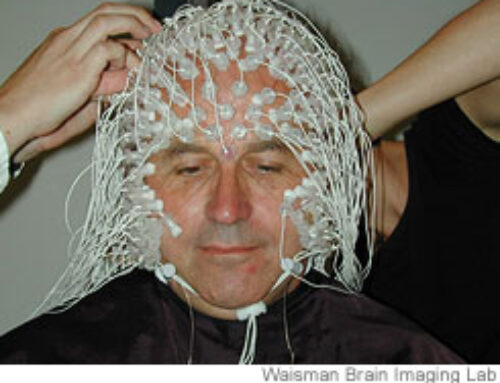Research Shows that Meditation Changes the Structure of the Brain
Ongoing research is establishing that meditation changes the emotional dynamics as well as the neurodynamics of our mind. The recent published research of Dr. Sara Lazar at the Massachusetts General Hospital is an additional confirmation of the (scientifically) observable affects of meditation practice. But, did you know that meditating on compassion can actually change the physical structure of the mind?
In a recent blog posting on this site, Mindfulness meditation training changes brain structure in 8 weeks, I wrote a brief version of this new post. Here’s a more complete discussion of Dr. Davidson’s work.
Dr. Richard Davidson Studies Meditation
At the University of Wisconsin in Madison, Dr. Richard Davidson and his staff have pioneered numerous imaging and electrophysiological studies of the human brain to observe the neurophysiological dynamics of cognitive functioning and emotional regulation, neural substrates of various central nervous system disorders, and the effects of meditative and contemplative practices on neural pathways and dynamics of the brain.
Dr. Davidson is the Director of the W.M. Keck Laboratory for Functional Brain Imaging and Behavior, the Laboratory for Affective Neuroscience and the Center for Investigating Healthy Minds, Waisman Center at the University of Wisconsin-Madison, and is responsible for many of the innovative inquiries into meditation that have been carried out at the Keck Lab.
The major theme of Davidson’s research into contemplative and meditative practices is the observance that something goes on in the mind, or at least the brain, of individuals trained in meditative practices. The “something” that occurs varies depending upon the scope of the study, but a key similarity between his studies of meditation is that the brain of an individual who has a regular meditative practice appears more adept at reorganizing or recruiting certain neural pathways and processes to deal with challenges than does the brain of someone who does not have such a practice.
Meditation Meditates Emotions
In a number of studies, Dr. Davidson and his colleagues have enrolled long- and short-term meditators, some monks and other lay practitioners, to determine whether mindfulness and meditation have any observable affect on the brain and neural correlates of cognitive processes. What Davidson and his colleagues have observed in these groundbreaking studies is that specific regions of the brain responsible for information-processing and emotional regulation can be mediated and modulated through the means of meditative practices.
Meditation Fosters Compassion
In one study—hailed as “proving” that compassionate meditation practices were at least beneficial for the practitioner, published in the Wall Street Journal and the Washington Post, and presented in the proceedings of the National Academy of Sciences in November 2004 —Davidson and his colleagues compared a control group of college students with a group of monks who were long-term meditators. The monks had practiced between 10,000 and 50,000 hours over a period of time ranging from 15 to 40 years. What was seen was that the monks produced gamma waves that were up to 30 times as strong as the students’. In addition, larger areas of the meditators’ brains were active, particularly in the left prefrontal cortex, an area of the brain highly correlated with processing positive emotions. One description of this phenomenon likened it to an urge by the brain to come to the aid of another based solely on a compassionate focus.
Davidson and his colleagues realized that these results had important implications for ongoing research into the ability of the brain to form new connections and to mediate perception and experience based on training. Previously, the brain had been thought to be relatively static in its ability to change after adulthood. Scientists used to believe that connections among brain nerve cells were fixed early in life and did not change in adulthood. But that assumption has been disproved over the past decade with the help of advances in brain imaging such as fMRI and other techniques.
Meditation Works With Neuroplasticity
What has been discovered is that the brain is more malleable and able to change. Especially in research being done on brain trauma and rehabilitation, it’s been found that the brain has an ability to “rewire” itself, a phenomenon known as “neuroplasticity.” Recent research has shown that through intensive training, portions of the brain can be “strengthened.” For example, the part of the brain that corresponds to how a violin player will use the hand that fingers the notes on the violin actually grows with training when compared with the bow hand, and this growth occurs even if the musician starts playing as an adult. The work with the monks suggested that this potential for growth and change might occur in the emotional centers of the brain as well.
Additionally, Davidson and his colleagues found that when requested to meditate on compassion, the monks were able to generate remarkable brain waves. Perhaps these meditators had attained an intensely compassionate state of mind. And, if this was the case, then with “exercise” or practice in compassionate exercises, people could increase their ability to be compassionate. For more information on this and other research done by Davidson et al, I encourage you to visit the website at the Waisman Laboratory for Brain Imaging and Behavior (http://brainimaging.waisman.wisc.edu/) and read many of the free articles that are available for download.
This site has tons of tools for learning how to meditate and be compassionate.
I encourage you to look through the HUNDREDS of articles that I’ve written and especially check out my weekly meditation tips and other useful meditation materials provided for your health and well being. Please let me know if you’d like to discuss anything with me, have any questions or need clarification regarding anything that I’ve written about.
Other Great Meditation Resources and Information:
For More Information on How to Meditate
Please view the Related Stuff below for help getting started in your meditation practice! Also don’t forget to download my free e-book, Can Meditation Change the Way that You View Your World? and download the free e-book, How to Work with the Four Distractions to Meditation and get started learning how to deal with some of the major obstacles in meditation.






[…] blog covered a study by Dr. Richard Davidson where long-term meditators where scanned in an fMRI and found to have activated centers within the […]
[…] There’s actually plenty of evidence that shows that helping others can actually make us happier. And research into practitioners who use compassion-meditation techniques has shown that we can actually modify the neural (brain) pathways that control our emotions. (Please see Meditation Increases Our Ability to Be Compassionate.) […]
[…] into all you do, check out this link. Also, there have previous posts on this blog about the scientific research into meditation and compassion, as well as the benefits that meditation can have on our ability to work with our […]
[…] either on this site or somewhere else, that meditation can foster compassion (there’s even scientific evidence proving this!). The two, knowing one’s mind and knowing one’s heart, go hand-in-hand. […]
[…] Meditation and Compassion Go Together […]
[…] There’s actually plenty of evidence showing that generosity, compassion, and kindness are good for your health. And research into practitioners who use compassion meditation techniques has shown that we can actually modify the neural (brain) pathways that control our emotions – please see post from Meditation Increases Our Ability to Be Compassionate. […]